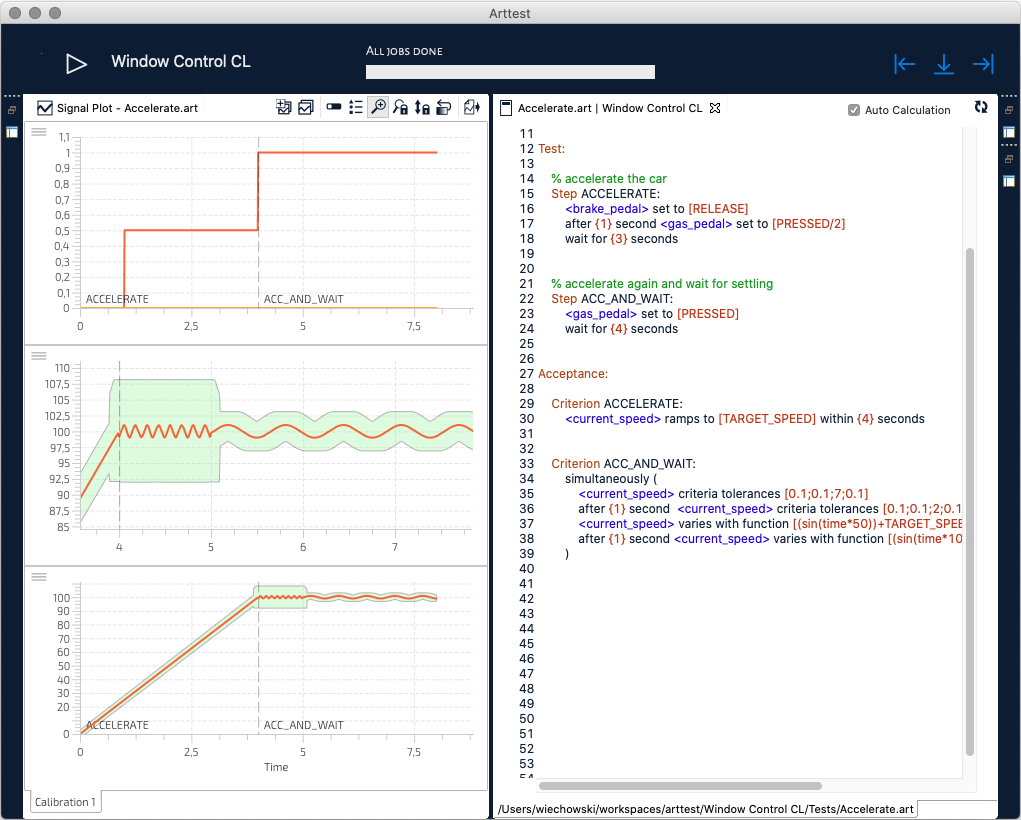
Arttest comes with a powerful evaluation mechanism based on reference signals. Reference signals are specified using the textual test specification language and describe the expected data for a recorded signal. However, in most cases, the exact output values are either not known to the last bit or very hard to specify. Thus, Arttest supports the use of tolerances, which apply when comparing measured output signals with the specified reference data. Tolerances with respect to absolute or relative values and time may be used and also dynamically changed within the test, applying very specific and relevant tolerances for each phase of the test.

The evaluation methods are highly configurable with respect to the tolerances used or whether the evaluation is disabled for a specified time. To evaluate signals with continuous value ranges, the tube evaluation can be used, to define an acceptance region around the reference signal based on the tolerances. For signals with discrete signal ranges, the sequential evaluation can be used to ensure that the recorded data follows a discrete value sequence. If you want to use individual logic to assess the test result, you can use assertions instead of reference signals.
To separate test inputs from expected values, Arttest tests are a combination of a Test section and an Acceptance section. The former defines the test stimuli, the latter the reference signals. Both share the same language elements for signal definition. To ease the specification of signals and tolerances for evaluation purpose, a live visualization using the signal plot feature is always displayed.

Reference criterion for signal “current speed” with changing tolerance